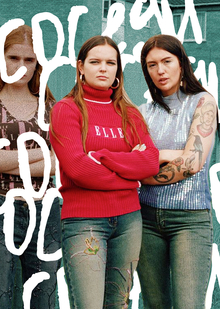
Ars Electronica — HSE — Round table featuring the new digital deal
From September 8 to 12, Ars Electronica 2021, the festival for art, technology and society, took place not only in Linz (Austria) and 86 other Ars Electronica Gardens around the globe, but also online.
The HSE Pavilion’s projects dwell on the ambiguous nature of social networks’ transparency; digital perception of the woman’s body; understanding a person with attention deficit disorder and dealing with frustration about one’s behaviour in the face of approaching deadlines As a conclusion, we will meet at a round-table discussion that unites specialists in media history, semiotics of contemporary art, game studies, digital art and design to rethink perspectives of the online «condition humaine».
Participants:
Margarita Kuleva — PhD in sociology, expert in art sociology, associate professor at the department of sociology at HSE University, head of the design and contemporary art department at HSE University (Saint-Petersburg)
Stanislav Shuripa — artist, curator, critic and theorist of contemporary art, rector of the Institute of Contemporary Art Moscow
Maksim Miroshnichenko — researcher of cybernetics and post-cognitivism, author of the telegram channel «Affordable affordance», employee of the Center for the History of Knowledge, Poletayev Institute for Theoretical and Historical Studies in the Humanities (HSE University), a fellow of the Alexander Pyatigorsky Foundation (2018-2019)
Nikolai Dybovsky — game designer, head of the Ice-Pick Lodge studio, curator at the Game Design and Virtual Reality department at HSE Art and Design School (HSE University)
Denis Epifantsev — writer, head of the information design group at Deloitte CIS, author of the Design Philosophy course at course at HSE Art and Design School (HSE University)
Moderator: Alexandra Persheeva — PhD in art history, associate professor at HSE Art and Design School (HSE University)
GIF by Katya Pravda (HSE Art Gallery)
The future is no longer painted as a hi-tech urban jungle inhabited by cyborgs and robots brandishing their laser blasters. The future is in the social networks and digital platforms, mediating all aspects of life. Though this scheme seems familiar and routine, it leaves us with many disturbing questions. What is going to happen to society when the social center of gravity transfers completely to the online mode? What is going to happen to the body? How do we distinguish being from communicating and labor from leisure in cyberspace? These new media explore boundaries between corporeality and digital imagery, and the game space becomes transformational: in it, the present is re-evaluated and the detailed models of the future are designed.



